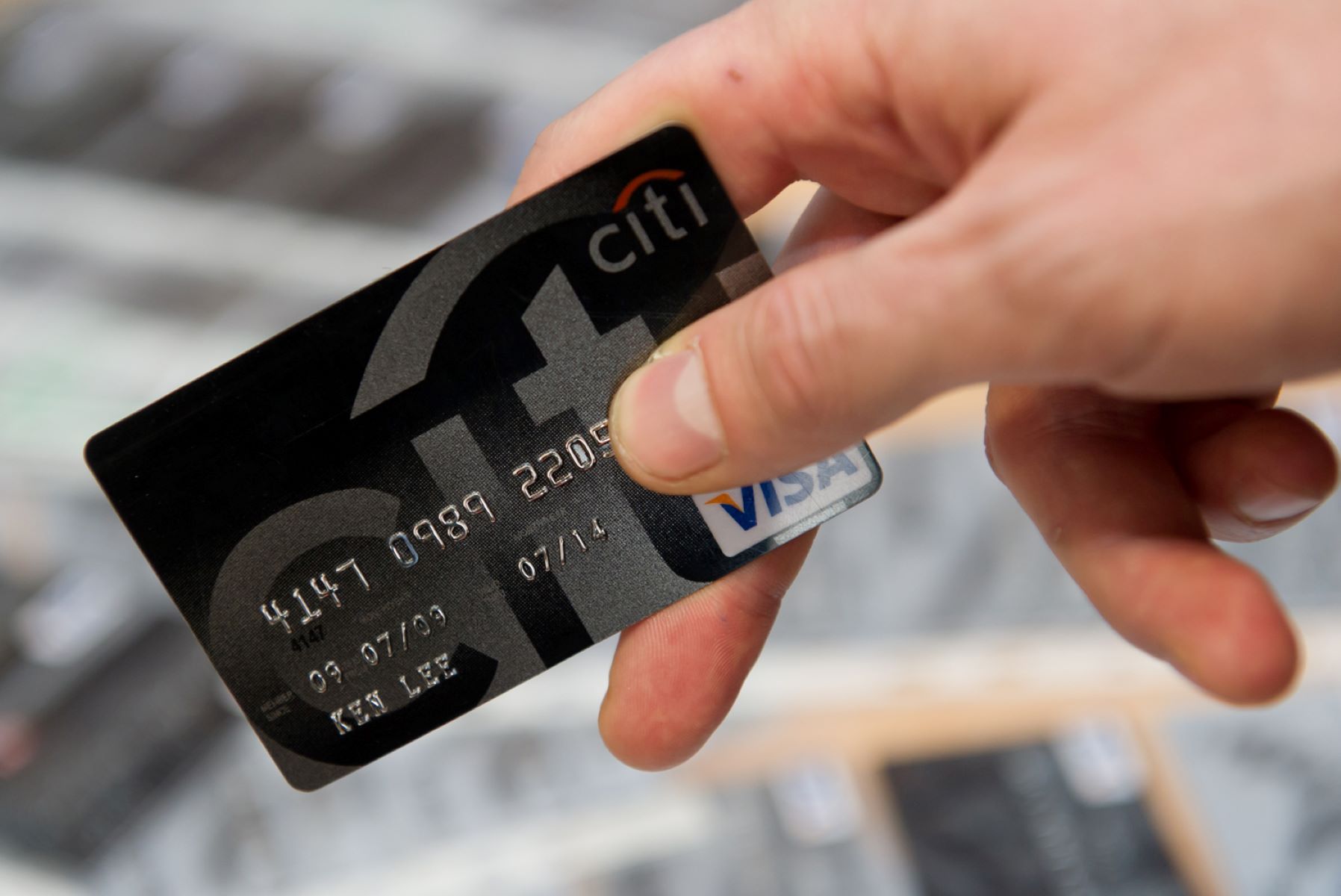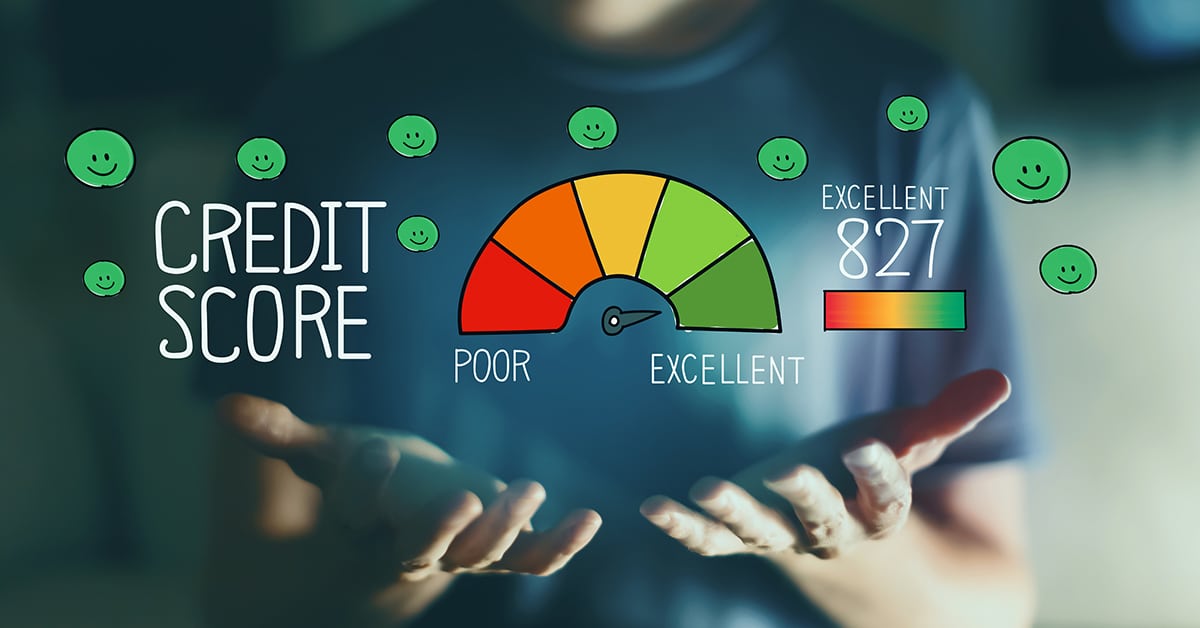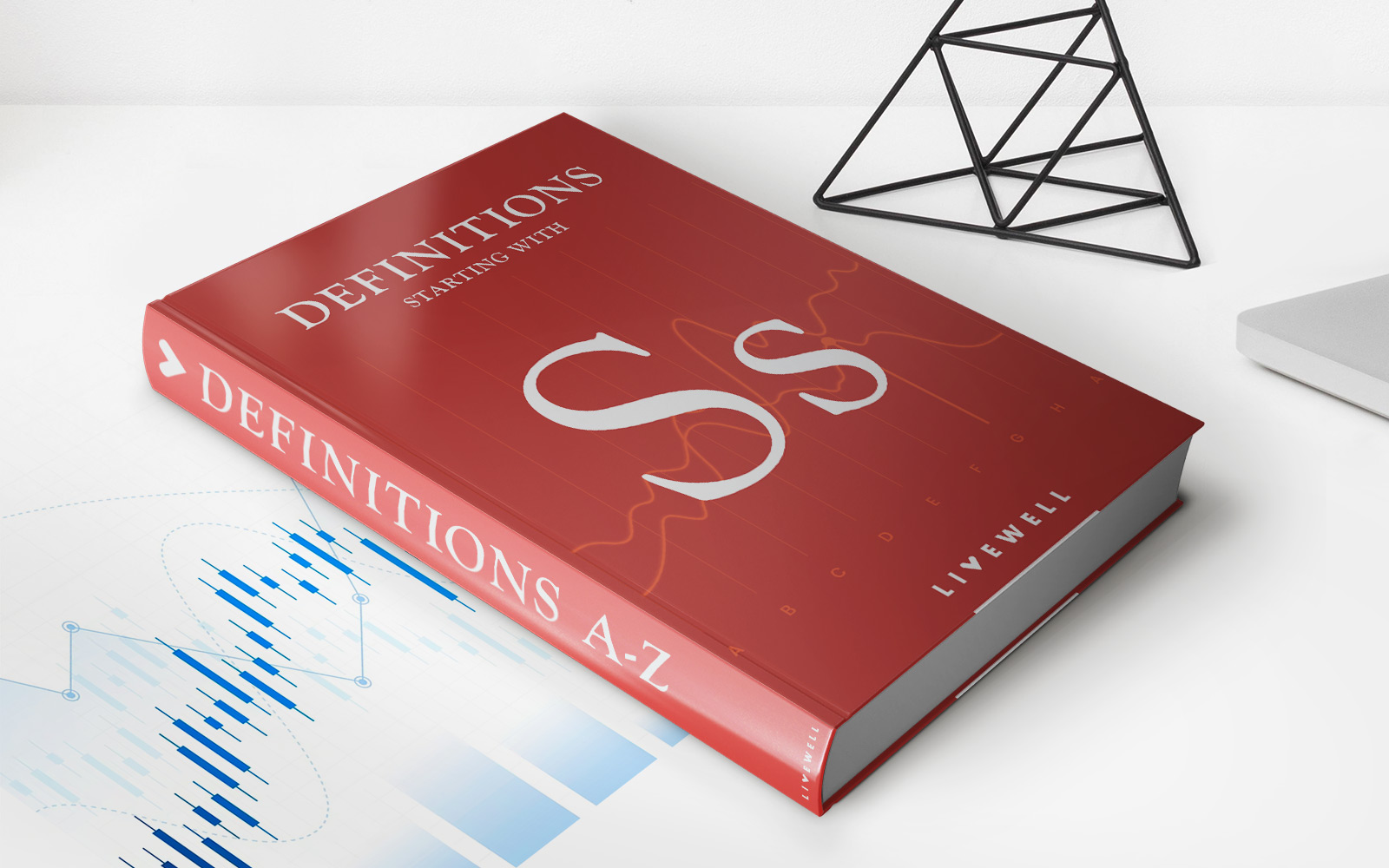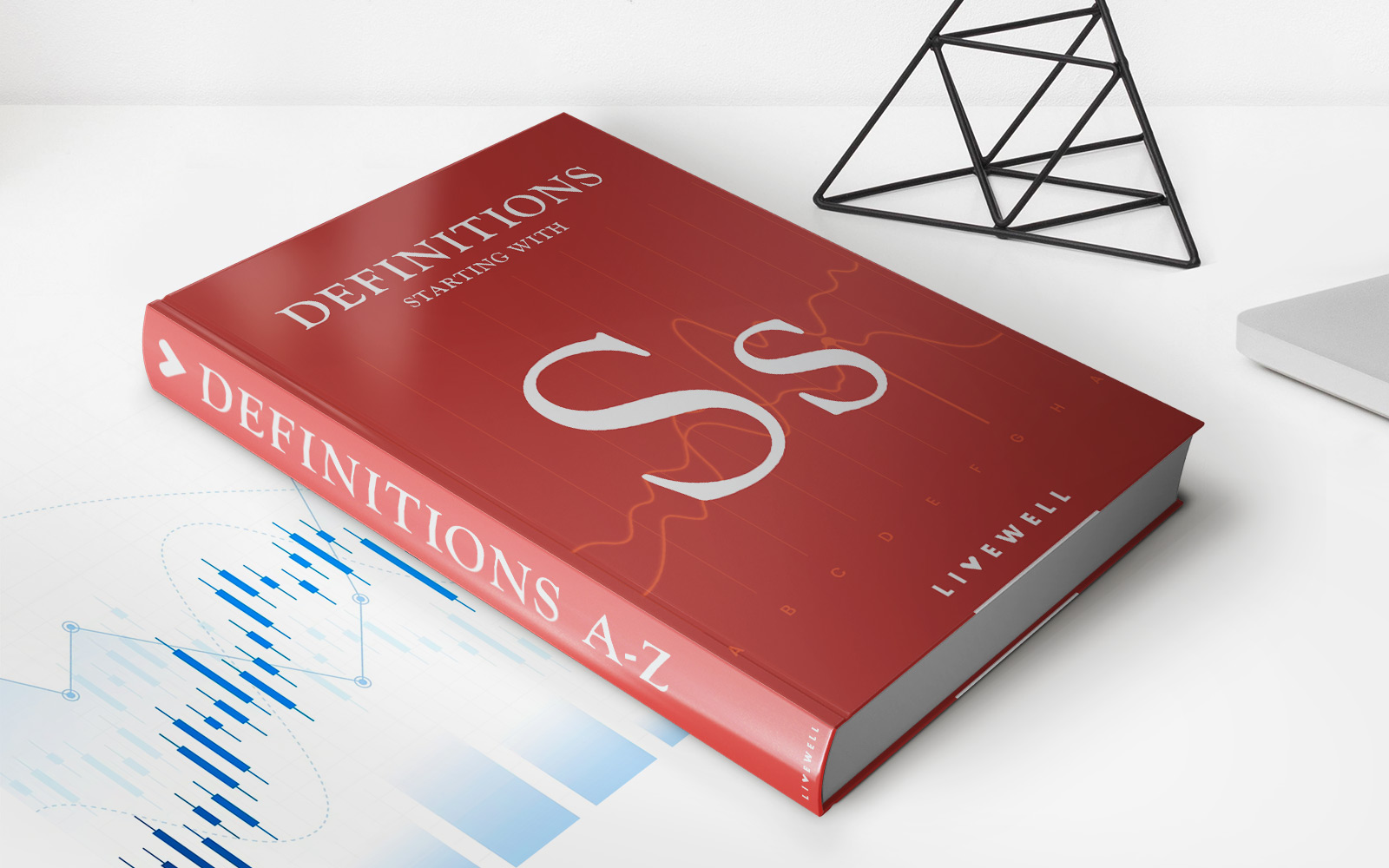

Finance
What Is Student Credit Card
Modified: February 21, 2024
Discover the benefits of student credit cards and how they can help you manage your finances more efficiently. Find out everything you need to know about student credit cards at [Title].
(Many of the links in this article redirect to a specific reviewed product. Your purchase of these products through affiliate links helps to generate commission for LiveWell, at no extra cost. Learn more)
Table of Contents
- Introduction
- What is a Student Credit Card?
- Benefits of a Student Credit Card
- Eligibility Criteria for a Student Credit Card
- How to Apply for a Student Credit Card
- Tips for Using a Student Credit Card Responsibly
- Common Mistakes to Avoid with a Student Credit Card
- Building Credit History with a Student Credit Card
- Top Student Credit Cards in the Market
- Conclusion
Introduction
Welcome to the world of finance! As a student, it’s important to develop a strong foundation of financial knowledge and skills, and one tool that can help you on this journey is a student credit card. In today’s digital age, financial transactions are increasingly moving towards cashless payments, making credit cards a valuable asset. But what exactly is a student credit card, and how can it benefit you?
A student credit card is a specially designed credit card that caters to the needs and financial circumstances of students. It offers several advantages, such as lower credit limits, tailored rewards programs, and features that promote responsible credit card usage. By obtaining a student credit card, you can begin building a positive credit history, gain financial independence, and learn crucial money management skills.
In this article, we will delve into the world of student credit cards and explore their benefits, eligibility criteria, application process, tips for responsible usage, common mistakes to avoid, and the top student credit cards available in the market. Whether you’re a university freshman or a graduate student, this guide will equip you with the knowledge to make informed decisions about student credit cards and help you navigate the world of personal finance with ease.
What is a Student Credit Card?
A student credit card is a financial tool designed specifically for students who are enrolled in college or university. It functions like a regular credit card, allowing you to make purchases and pay for them at a later date. However, there are a few key features that distinguish student credit cards from other types of credit cards.
One of the main differences is that student credit cards often have lower credit limits compared to standard credit cards. This is to ensure that students can manage their finances responsibly without accruing excessive debt. Additionally, student credit cards may offer rewards programs tailored to student needs such as discounts on textbooks, travel rewards, or cashback on purchases made at popular student retailers.
Another important aspect of student credit cards is that they typically have flexible eligibility criteria. Since most students have little to no credit history, these cards are designed to help students establish and build credit. As a result, they often have more lenient approval requirements compared to regular credit cards, making it easier for students to get approved.
Additionally, student credit cards may come with features that promote responsible credit card usage. For example, they may have spending alerts or budgeting tools to help you stay on top of your expenses. Some student credit cards also offer educational resources or seminars on financial literacy to help students develop good money management habits.
It’s important to note that a student credit card should be used responsibly. It’s not free money, but rather a tool to help you learn financial responsibility and build a positive credit history. By making regular, on-time payments and keeping your credit utilization low, you can establish good credit habits that will benefit you in the long run.
Now that you have a better understanding of what a student credit card is, let’s explore the various benefits it can provide to students.
Benefits of a Student Credit Card
A student credit card comes with a range of benefits that can be highly advantageous for students. Let’s explore some of the key advantages:
- Building Credit History: One of the primary benefits of a student credit card is the opportunity to establish and build a positive credit history. By using your card responsibly and making timely payments, you can demonstrate your creditworthiness to lenders and increase your chances of being approved for loans or future credit cards.
- Financial Independence: Having a credit card allows students to gain financial independence. It provides a convenient way to make purchases, pay bills, and handle emergency expenses without relying solely on parents or guardians for funds.
- Convenience and Security: With a student credit card, you can enjoy the convenience of cashless transactions. Whether you’re shopping online or making in-person purchases, a credit card provides a secure and widely accepted payment option.
- Emergency Fund: Life is unpredictable, and unexpected expenses can arise at any time. Having a student credit card can serve as a backup emergency fund, providing you with the flexibility to cover unforeseen costs when needed.
- Building Responsible Financial Habits: By using a student credit card responsibly, you can develop essential financial skills and habits at an early age. This includes budgeting, tracking expenses, and understanding interest rates and fees.
- Access to Rewards and Benefits: Many student credit cards offer rewards programs tailored to student needs. These rewards can range from cashback on certain purchases to discounts on popular student retailers, travel benefits, or exclusive access to events.
- Purchase Protection: Some student credit cards come with purchase protection, which can be helpful when buying expensive items. This feature may provide extended warranty coverage, price protection, or reimbursement for damaged or stolen items.
It’s important to highlight that while student credit cards offer many benefits, it’s crucial to use them responsibly. Establishing good credit habits and avoiding excessive debt should always be a priority. By understanding the benefits and being mindful of responsible credit card usage, a student credit card can be a valuable tool on your financial journey.
Eligibility Criteria for a Student Credit Card
To qualify for a student credit card, you typically need to meet certain eligibility criteria. While specific requirements may vary depending on the credit card issuer, here are some common factors to consider:
- Be a Student: As the name suggests, student credit cards are designed for students. You will need to be enrolled in a recognized educational institution, such as a college or university, to be eligible. Some credit card issuers may also extend eligibility to high school students.
- Minimum Age: Most credit card issuers require applicants to be at least 18 years old. However, some may have a minimum age of 21. If you are under the age of 21, you may need a co-signer such as a parent or guardian to be approved for a credit card.
- Income Requirements: While student credit cards typically have lower credit limits, you may still need to show proof of income or financial resources to demonstrate that you can make payments on the card. This can include income from a part-time job, scholarships, or financial support from parents or guardians.
- Credit History: Since student credit cards are designed for individuals with limited or no credit history, they often have more lenient requirements in this area. You may not need a minimum credit score or any prior credit history to be approved. However, having a good credit score can increase your chances of being approved for a card with better rewards or features.
- Residency Status: In some cases, you may need to provide proof of residency in the country where you are applying for a credit card. This can include a valid identification document, such as a passport or driver’s license, and proof of address, such as a utility bill or bank statement in your name.
It’s important to note that meeting the eligibility criteria does not guarantee approval for a student credit card. Each credit card issuer has its own evaluation process, and they may consider additional factors such as your payment history and debt-to-income ratio. It’s always a good idea to compare different credit card options, read the terms and conditions carefully, and apply for a card that aligns with your needs and financial situation.
Now that you understand the typical eligibility criteria, let’s dive into the application process for a student credit card.
How to Apply for a Student Credit Card
Ready to apply for a student credit card? Follow these steps to navigate the application process:
- Research Credit Card Options: Start by researching different credit card options specifically designed for students. Look for cards that offer benefits and features that align with your financial needs and goals.
- Gather Required Documents: Before applying, gather the necessary documents, including proof of student enrollment, identification (such as a passport or driver’s license), proof of address (such as a utility bill or bank statement), and proof of income (if required).
- Compare Terms and Conditions: Carefully review the terms and conditions of each credit card you are considering. Pay attention to interest rates, fees, rewards programs, and any limitations or restrictions that may apply.
- Initiate the Application: Once you have chosen a credit card, visit the issuer’s website or reach out to them directly to begin the application process. Fill out the online application form or provide the necessary information over the phone, as per the issuer’s instructions.
- Provide Accurate Information: Make sure to provide accurate and complete information in the application form. This includes personal details, educational information, employment status, and financial details.
- Wait for Approval: After submitting your application, the credit card issuer will review your information and determine whether to approve or deny your application. This process may take a few days to a few weeks depending on the issuer. Some issuers may provide instant approval or denial.
- Receive Your Card: If your application is approved, you will receive your student credit card in the mail. Activate the card as per the issuer’s instructions before using it.
Remember, it’s essential to use your student credit card responsibly by making timely payments, keeping your credit utilization low, and avoiding unnecessary debt. This will help you build a positive credit history and maintain good financial health.
Now that you know how to apply for a student credit card, let’s explore some tips for using it responsibly.
Tips for Using a Student Credit Card Responsibly
Using a student credit card responsibly is key to building a positive credit history and avoiding unnecessary debt. Here are some tips to help you make the most of your student credit card:
- Create a Budget: Before using your credit card, create a monthly budget that outlines your income and expenses. This will help you stay within your financial means and avoid overspending.
- Track Your Expenses: Keep a record of all your credit card transactions. This will help you stay aware of your spending habits and identify any unauthorized charges.
- Pay Your Balance in Full: Whenever possible, pay off your credit card balance in full each month to avoid accruing interest charges. If you can’t pay the full balance, make at least the minimum payment on time to avoid late fees and negative marks on your credit report.
- Avoid Unnecessary Debt: While a credit card can provide financial flexibility, it’s important to resist the temptation to make purchases beyond your means. Only use your card for necessary expenses that you can afford to pay off.
- Set Up Payment Reminders: Missing credit card payments can negatively impact your credit score. Set up payment reminders or automatic payments to ensure you never miss a due date.
- Monitor Your Credit Card Statements: Regularly review your credit card statements for any errors or fraudulent charges. Report any discrepancies to your credit card issuer immediately.
- Keep Credit Utilization Low: Aim to keep your credit card utilization ratio (the percentage of your credit limit that you use) below 30%. This will help maintain a healthy credit score.
- Be Cautious with Cash Advances: Cash advances from your credit card usually come with high-interest rates and transaction fees. Use cash advances sparingly and only in emergency situations.
- Understand the Terms and Conditions: Familiarize yourself with the terms and conditions of your credit card, including interest rates, fees, and any promotional offers. This will help you make informed financial decisions.
By following these tips, you can develop responsible credit card habits and set yourself up for long-term financial success. Now, let’s explore some common mistakes to avoid when using a student credit card.
Common Mistakes to Avoid with a Student Credit Card
While a student credit card can be a valuable financial tool, it’s important to be aware of common mistakes that students often make. By avoiding these pitfalls, you can ensure a positive credit card experience. Here are some mistakes to steer clear of:
- Overspending: It’s easy to get carried away and spend beyond your means when using a credit card. Avoid the temptation to make impulsive purchases and stick to your budget.
- Paying Only the Minimum Balance: Making only the minimum payment each month may seem convenient, but it can lead to mounting interest charges and long-term debt. Whenever possible, pay off your full balance to avoid unnecessary interest expenses.
- Making Late Payments: Late credit card payments can damage your credit score and result in late payment fees. Set up payment reminders or automatic payments to ensure you never miss a due date.
- Ignoring the Fine Print: Before using your credit card, familiarize yourself with the terms and conditions. Pay attention to interest rates, fees, and any promotional offers. Ignoring the fine print can lead to surprises and unexpected costs.
- Maxing Out Your Credit Limit: Utilizing your entire credit limit can negatively impact your credit score. Try to keep your credit card utilization below 30% to maintain a healthy credit profile.
- Using Your Card for Cash Advances: Cash advances typically come with high-interest rates and transaction fees. Avoid using your credit card for cash advances unless it’s an absolute emergency.
- Sharing Your Card Information: Keep your credit card information confidential and never share it with anyone. This includes not giving your card or card details to friends or family members.
- Ignoring Credit Card Statements: Regularly review your credit card statements to ensure there are no errors or fraudulent charges. Ignoring your statements can lead to overlooking unauthorized transactions.
- Closing Old Credit Card Accounts: Closing old credit card accounts can have a negative impact on your credit score. Instead, consider keeping them open to maintain a longer credit history.
- Applying for Multiple Credit Cards: Applying for multiple credit cards within a short period can raise concerns to lenders and negatively impact your credit score. Be selective and apply for credit only when necessary.
Avoiding these common mistakes will help you make the most of your student credit card and use it to your advantage. Building responsible credit habits now can set the foundation for a strong financial future. Now, let’s explore how using a student credit card can help you build credit history.
Building Credit History with a Student Credit Card
One of the significant benefits of having a student credit card is the opportunity to start building a positive credit history. Here’s how using a student credit card responsibly can help you establish and strengthen your creditworthiness:
Establishing Credit: As a student, you likely have limited or no credit history. A student credit card provides you with the chance to establish your credit profile. By making regular, on-time payments and keeping your credit utilization low (the amount of credit you use compared to your credit limit), you demonstrate to lenders that you can responsibly manage credit.
Building a Positive Credit Score: Your credit score is a numerical representation of your creditworthiness. Using your student credit card responsibly and making timely payments can help boost your credit score over time. A higher credit score opens doors to better borrowing opportunities in the future, such as lower interest rates on loans and credit cards.
Increasing Credit Limit: As you continue to use your student credit card responsibly, some credit card issuers may increase your credit limit. A higher credit limit shows that lenders trust you with a larger amount of credit, further improving your credit history.
Gaining Financial Independence: Building credit history with a student credit card allows you to gain financial independence. It establishes your ability to handle credit responsibly, providing you with more financial freedom in the future when you may need to make larger purchases, such as a car or a home.
Access to Better Financial Products: A strong credit history opens doors to better financial products and services. It positions you as a reliable borrower in the eyes of lenders, making it easier to qualify for loans, mortgages, or credit cards with better terms and lower interest rates in the future.
Remember, building credit history takes time and effort. It’s crucial to use your student credit card responsibly by making regular payments, keeping your credit utilization low, and avoiding excessive debt. By doing so, you can establish a solid credit foundation that will benefit you throughout your financial journey.
Now that you understand the importance of building credit history, let’s explore some of the top student credit cards available in the market.
Top Student Credit Cards in the Market
There are several student credit cards available in the market, each with its own set of features and benefits. Here are some of the top student credit cards to consider:
- Discover it Student Cash Back: This card offers cashback rewards on eligible purchases, including 5% cashback in rotating quarterly categories, and 1% cashback on all other purchases. Discover also provides a rewards match where they double all the cash back earned in the first year.
- Journey Student Rewards from Capital One: This card offers cashback rewards and has a unique feature called CreditWise, which provides credit monitoring and tools to help you track and improve your credit score.
- Citi Rewards+ Student Card: This card offers rewards and has a unique feature that rounds up your rewards points on every purchase to the nearest 10 points. It also has a lower redemption threshold for rewards.
- Bank of America Cash Rewards Credit Card for Students: This card offers cashback rewards and provides flexibility in choosing your bonus cashback category. It also offers a higher cashback rate for purchases at gas stations and grocery stores.
- Chase Freedom Student Card: This card offers cashback rewards and provides access to Chase Ultimate Rewards, where you can earn additional rewards for travel, merchandise, and statement credits.
When choosing a student credit card, consider the rewards programs, interest rates, fees, and any other additional perks that align with your financial needs and spending habits. It’s also important to compare the terms and conditions of each card to ensure you are getting the best deal.
Remember that responsible credit card usage is paramount. Pay your bills on time, keep your credit utilization low, and use your credit card for necessary expenses only. By doing so, you can maximize the benefits of your student credit card while building a positive credit history.
Now that you have an overview of some top student credit cards, let’s wrap up this article.
Conclusion
As a student, a credit card can be a valuable financial tool that helps you build credit, gain financial independence, and develop responsible money management skills. A student credit card offers numerous benefits tailored to the unique needs of students, including lower credit limits, tailored rewards programs, and features that promote responsible credit card usage.
To make the most of your student credit card, it’s essential to use it responsibly. Create a budget, track your expenses, and make timely payments to avoid unnecessary debt and build a positive credit history. Avoid common mistakes such as overspending, paying only the minimum balance, and ignoring the fine print.
When applying for a student credit card, research different options, compare terms and conditions, gather the necessary documents, and submit your application. If approved, use your student credit card wisely, keeping your credit utilization low and making regular payments to establish good credit habits.
There are several top student credit cards available in the market, each with its own set of features and benefits. Consider factors such as rewards programs, interest rates, fees, and additional perks when choosing the right card for you.
By using your student credit card responsibly, you can lay the foundation for a strong credit history, gain financial independence, and set yourself up for long-term financial success. Remember, a credit card is a tool to be used wisely and thoughtfully.
Now armed with knowledge about student credit cards, it’s time to embark on your financial journey as a responsible credit card user. Start building your credit history, making sound financial decisions, and confidently take steps towards achieving your financial goals.














